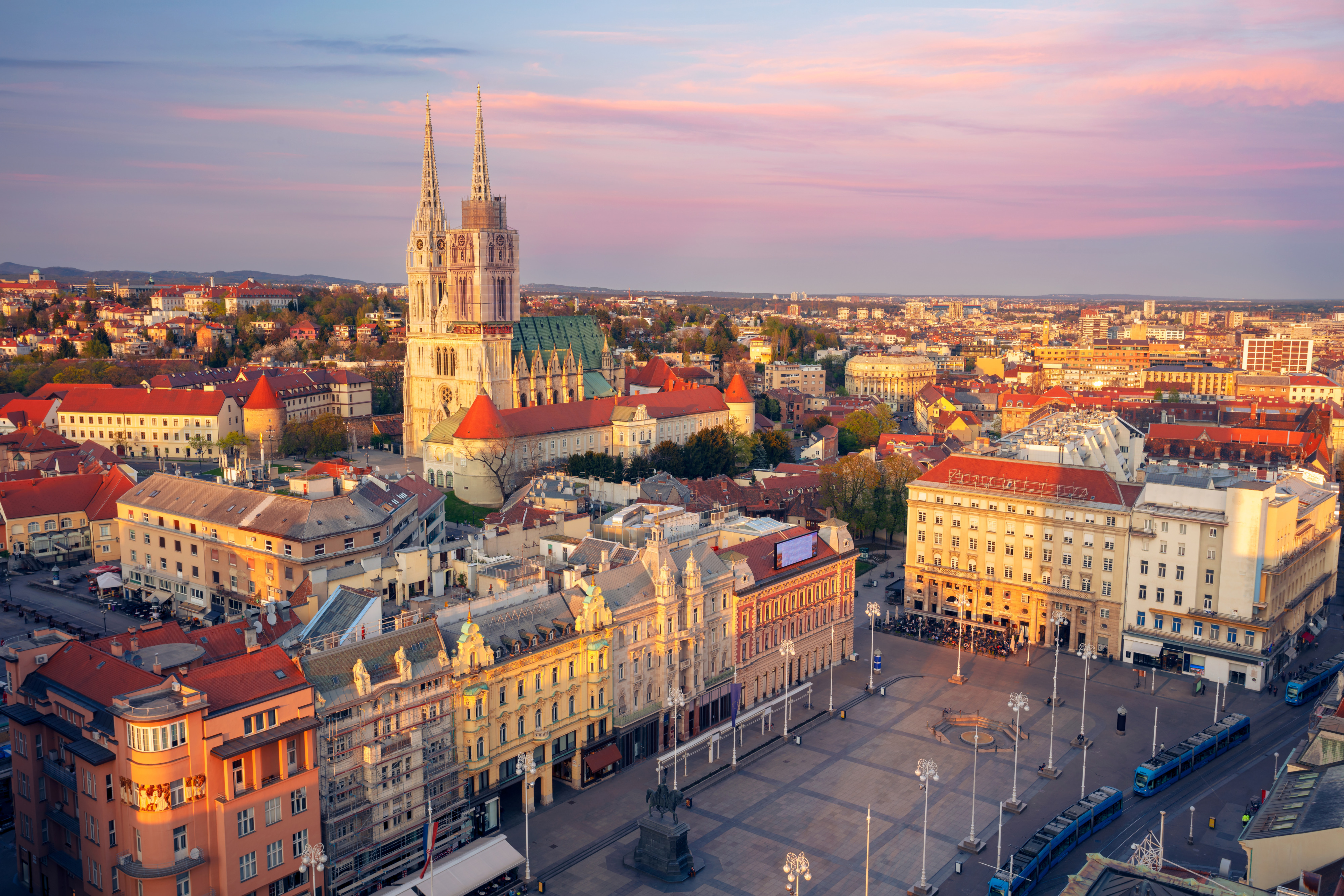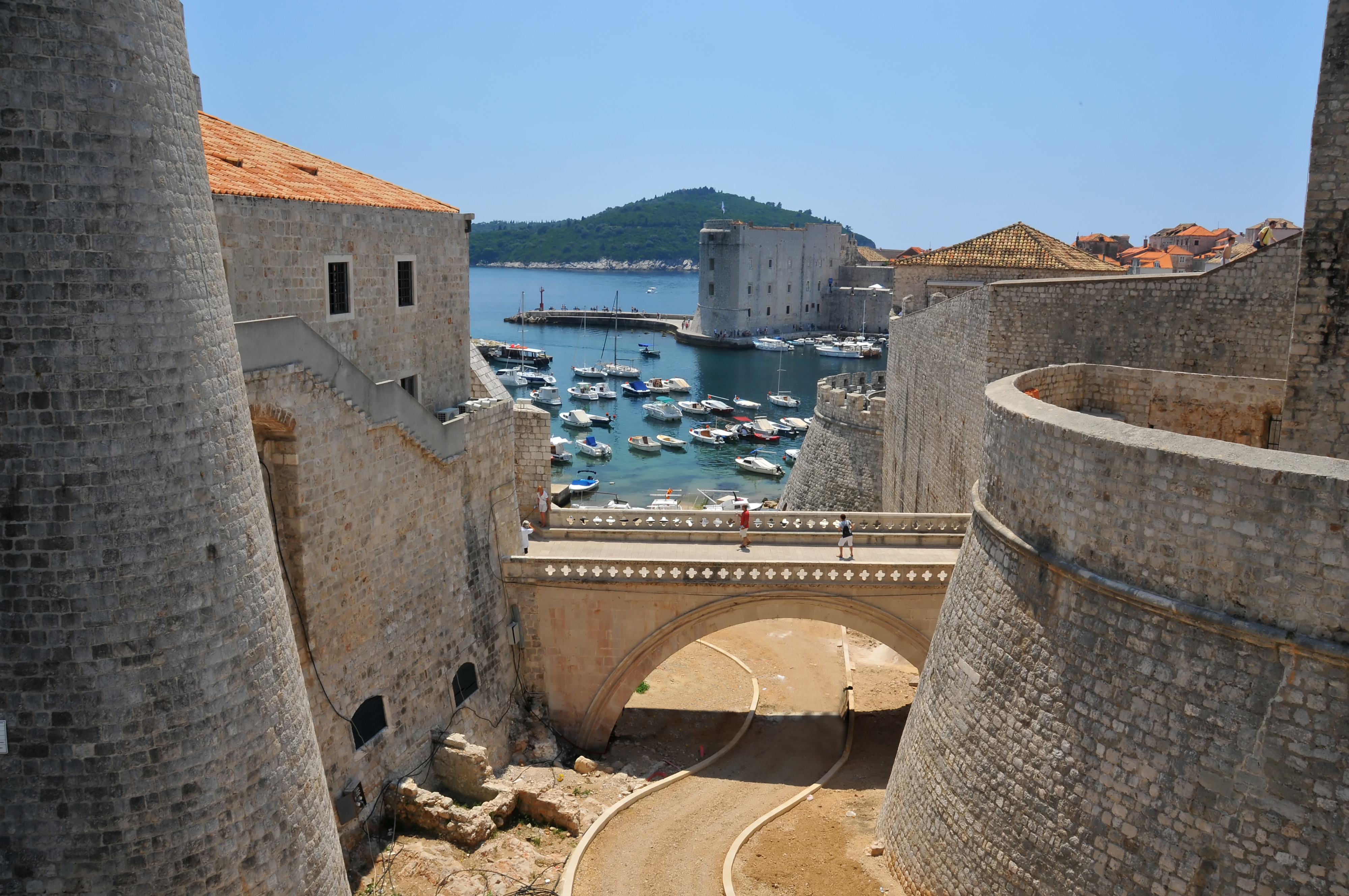The luminous blue Adriatic Sea, abundant vegetation, a mild climate, and a host of medieval towns and cities originally built by the Romans make Croatia a fantastic destination –
perfect whether you’re looking for a quick getaway or a full-on holiday. It has mountains, coves with crystal-clear water, and unexpected landscapes where you can try your hand at adventure sports. Go ahead and enjoy the savoury cuisine or lose yourself among the magical corners of some of its most beautiful cities: Zagreb, Dubrovnik, and Split – and here’s a quick look at each:

Zagreb
The country’s capital is famous for its monumental architecture – mostly in classic 19th-century European style – with numerous palaces, bourgeois buildings, and green spaces. Zagreb also boasts amazing museums, music, design, and cuisine, with a vibrant coffee-shop culture and lively outdoor life even in winter.
A good place to start is the Lower Town’s main square, Trg Bana Jelačića, named after Josip Jelačić, a 19th-century general and viceroy of Croatia under the Austro-Hungarian Empire, commemorated by a statue in his honour. This part of the city is home to most of its cultural institutions and elegant 19-century architecture, along with a green space stretching from Trg Jelacica to the railway station. The Green Horseshoe is a network of gardens, landmarks and museums which owes its name to its “U” shape. And speaking of museums, in addition to fine examples devoted to art and history, there are also a handful of quirkier ones, most notably the Museum of Broken Relationships, housed in the elegant baroque Kulmer Palace.
The Upper Town, meanwhile, is comprised mostly of the old town, where among picturesque staircases, narrow streets, gardens, and plazas you can discover the city’s most emblematic churches and buildings such as the Church of St. Mark, the Sabor (parliament), and the Church of St. Catherine. (which includes the Lotrscak Tower, where you can climb up and enjoy the wonderful out over the city).

Dubrovnik
Undeniably the country’s tourism star, the “pearl of the Adriatic” is considered one of the most beautiful cities on the Mediterranean. Bathed by warm waters, its dreamy old town – completely surrounded by imposing 13th-century city walls atop which you can walk around the entire perimeter of the old cit – it definitely deserves its UNESCO World Heritage status. It’s so atmospheric that it’s become Croatia’s most photographed and filmed-in locale, used for example as the setting for the likes of Game of Thrones, Robin Hood (2018), Star Wars: The Last Jedi; and Succession.
Some of its attractions not to be missed are the 16th-century Sponza Palace, the Church of San Blas, the Cathedral of the Assumption, the Dominican Monastery, and the Franciscan Friary and Church.
In addition, there are several beaches within walking distance of the city centre, as well as another we particularly recommend: Uvala Lapad, located about 2.5 kilometres (1½ miles) from the city; with fine, delicate sand, it also tends to be less crowded than the nearer beaches.

Split
Three hours up the coast from Dubrovnik, the country’s second largest city (pop. just over 161,312, metro area 343,000) was founded as a Greek colony in the 2nd or 3rd century BCE, and the jewel in its crown is Diocletian’s Palace, built in the early 4th century for the retirement of the eponymous Roman emperor and one of one of the world’s most impressive surviving ancient Roman constructions. But don’t expect a palace per se; instead, it’s a huge, square, walled neighbourhood full of incredible buildings exuding the atmosphere of another era yet also the backdrop to the vibrant daily life of its modern-day inhabitants. With its central square the Peristil (above), it’s also home to some interesting archaeological ruins such as the Jupiterov Hram (Temple of Jupiter) and Diocletian’s mausoleum, which several centuries later was built on to become the Sveti Duje (Cathedral of St. Domnius).
Another fantastic local experience is taking a stroll along the lively, palm-tree-lined nearby Riva, the seafront promenade from which you can take in the harbour on one side and end up at the 19th-century neo-Renaissance Prokurative, aka Trg Republike (Republic Square), inspired by Venice’s Piazza San Marco and home to a number of bars and restaurants (as well as the venue for the summertime Split Summer Festival from mid-July to mid-August).

